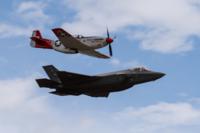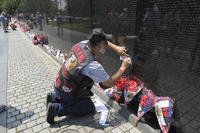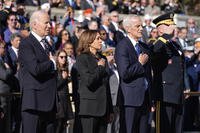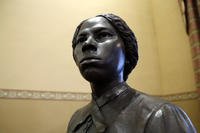Just because the enemy fortifies its positions using World War I-era defenses doesn't mean attackers have to use World War I-era tactics to defeat them.
Saddam Hussein's Iraqi Army learned this the hard way during the First Gulf War. The U.S. Army, famously having fewer horses and bayonets than they once had, opted out of fighting the war the way Saddam might have hoped.
In 1990, the Iraqi dictator invaded neighboring Kuwait for a couple of reasons, none of them good. He claimed that the tiny, oil-rich country was a historical province of Iraq. He also believed the Kuwaitis were stealing Iraqi oil through slant drilling and driving the price down to hurt Iraq's economy. He also thought the United States would be cool with it.
He was wrong.
Iraq invaded Kuwait in August 1990 and toppled the unprepared country within 12 hours. President George H.W. Bush ordered Operation Desert Shield in response to the invasion. The U.S. military began building up its forces in the area in case Iraq wouldn't leave Kuwait. By November 1990, the United Nations Security Council gave Iraq a deadline of Jan. 15, 1991, to get out.
But Saddam wasn't going to just sit there and wait to get his butt kicked. He moved an estimated 100,000 to 300,000 troops into Kuwait to greet the Americans and their coalition partners. The Jan. 15 deadline passed, and the "Mother of All Battles" was on.
On Jan. 17, 1991, Operation Desert Shield turned into Operation Desert Storm. The U.S.-led coalition waged a Noah's Ark-like air campaign for 40 days and 40 nights before the ground war even began. On Feb. 23, coalition forces made their way toward Kuwait. That's when they found the Iraqis had literally dug in.
The "Saddam Line" was Iraq's first line of defense, a series of trenches (some filled with oil to be ignited), sand berms, trench works, anti-tank ditches, barbed wire and mine fields. It was all that was keeping the coalition allies out of Kuwait. The attack to liberate Kuwait began at 4 a.m. local time, and the Saddam Line of trenches was the first stop along the way.
By 6:45 a.m., the allies had broken the Saddam Line and were deep inside Kuwaiti territory.
The secret to their success was nothing they had to work with in World War I. There were no bayonets, no trench brooms and no chemical warfare (at least, not from the Americans). The U.S. 1st Infantry Division (Mechanized) instead used minesweeping plows mounted on tanks along with "combat earthmovers" in what soon became known as the "bulldozer assault."

Rather than clear the trenches man by man, the Americans simply plowed through the Iraqis on combat earthmovers, even burying some defenders alive as they tried in vain to shoot the bulldozers.
"For all I know, we could have killed thousands," Col. Anthony Moreno, commander of the brigade that led the assault, told The Seattle Times. "I came through right after the lead company. What you saw was a bunch of buried trenches with people's arms and things sticking out of them."
The Americans suffered zero casualties in the assault, as they were all inside of armored vehicles and the Iraqi ground forces had no answer to them. As the Iraqis watched their comrades buried alive, they began to surrender en masse.
Some 70 miles of trenches were plowed over in a matter of hours. About 2,000 of the 8,000 defenders surrendered. It's not known just how many Iraqi soldiers were literally buried in the onslaught.
"I know burying people like that sounds pretty nasty," Col. Lon Maggart told Seattle Times reporter Patrick J. Sloyan, "but it would be even nastier if we had to put our troops in the trenches and clean them out with bayonets."
-- Blake Stilwell can be reached at blake.stilwell@military.com. He can also be found on Twitter @blakestilwell or on Facebook.
Want to Learn More About Military Life?
Whether you're thinking of joining the military, looking for post-military careers or keeping up with military life and benefits, Military.com has you covered. Subscribe to Military.com to have military news, updates and resources delivered directly to your inbox.
















